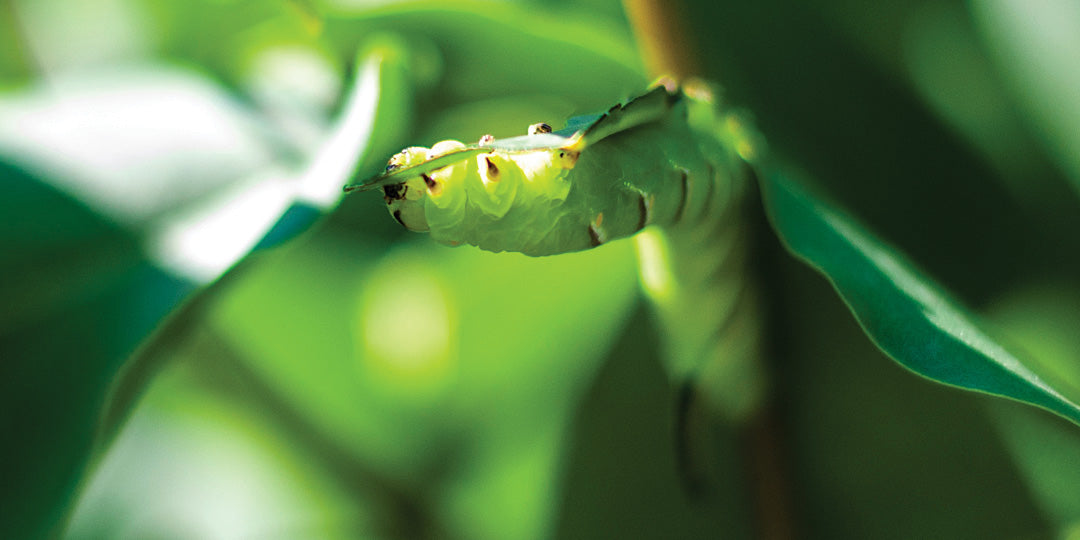
Pesticides Can Be Deceiving
Photo by Kristin Lyse on Unsplash
Share
8 Pesticide Myths Every Gardener Should Know
If you've ever turned to advice from online gardening forums about damage on your garden plants, you've probably encountered one of these common myths about pesticides in the garden. Here we separate fact from fiction n to help you take a pollinator-first approach to garden management.
-
"Pesticides only kill pests; they don't harm beneficial insects."
Reality: Most backyard pesticide treatments do not differentiate between harm to specific pests and harm to beneficial insects. For example , using pesticides near butterfly host plants can harm caterpillars. Pesticides can also disrupt the beneficial insects t hat help keep other garden pests in check, leading to pest outbreaks. For instance, spraying for mosquitoes can harm ladybugs. -
"Something is eating my plants. They're going to die! I need to do something."
Reality: Plants are resilient, especially native plants living in the right conditions. Sometimes a plant can appear to be overtaken by caterpillars, but can become huge, healthy, and beautiful if left alone for a few months ! Native plants and insects have had re lati onsh ips for much longer than any of us have been alive. Plants are adapted to the damage. Pa use before decid ing to intervene. -
"I sprayed pesticides a while ago , but it shouldn't be a problem for pollinators anymore."
Reality: Some pesticides ca n remain in the environment for days, weeks, or even months or years. Even if you sp rayed pesticides in the past, residues may still be present on plants, in soil , or on nearby surfaces. Pollinators that come into contact with these residues can still be exposed and affected. -
"If I can buy it, it must be safe."
Reality: Unfortunately, many pesticides are approved for use by the US Environmental Protection Agency despite the risks they pose to pollinators and other organisms. Testing is performed on single active ingredients , not end -use products or combinations of chemicals that pollinators encounter in reality, which can be more toxic. Additionally, European honey bees are the standard test species, so these tests do not capture the diverse vulnerabilities of native invertebrates. -
"Natural or organic pesticides are always safe. Just spray neem oil!"
Reality: While natural or organic pesticides generally have lower environmental impacts than their synthetic counterparts, they can still be toxic to beneficial insects. Neem oil can smother insects on contact, repel and reduce insect feeding, and prevent immature insects from maturing. Because neem is toxic to larvae of many insects, its use sho uld be avoided on the host plants of caterpillars. -
"My mosquito spray is derived from chrysanthemum flowers."
Rea lity: Pest control companies can mislead environmentalist consumers into thinking that their conventional products for mosquito and tick control are natural insecticides derived from chrysanthemum flowers. They often use structurally modified versions of the botanical substance, designed to last longer and have high toxicity to insects. -
Only insecticides harm pollinators; herbicides and fungicides are safe."
Reality: While insecticides are often the primary concern when considering pollinator safety, herbicide s and fungicides can also pose risks. Herbicides can eliminate flowering plants that pollinators need. Fungicides can make bees more susceptible to pathogens , insecticides, and hunger. -
"Pesticides solve pest problems. They're the cheapest and easiest way to get rid of pests."
Reality: Pesticides are often treating the symptoms of an underlying is sue , rather than solving it. Pesticides are economically and environmentally costly, and there are many alternative s for consideration. Given the potential for harm, pesticides should be used as a last resort only when other methods have fail ed and there is a significant risk to health or property.

